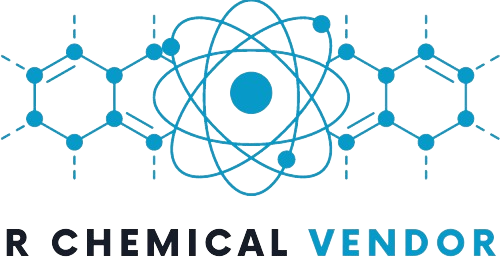BUY DCK POWDER
DCK, or deschloroketamine, is a dissociative anaesthetic substance. It is available for purchase online for research purposes. Because DCK has not been studied extensively, many are interested in acquiring it to improve the scientific understanding of DCK.
Medically, researchers have considered that DCK might be useful for helping to manage various types of infections. Bacteria, fungi, and viruses have all been shown to be adversely affected by DCK, which shows that it has some exciting potential as a pharmaceutical.
However, not enough is known about DCK for this to happen yet. This is why DCK powder is still available for purchase on Realchems. We are known as one of the best deschloroketamine vendors on the internet.
As with any compound, preliminary research allows scientists to decipher the potential of a chemical. As a member of the arylcyclohexylamine group of chemicals, DCK has a lot of possibilities.
Learn as much as you can about DCK powder before purchasing it so that you know how to move forward with your research.
HOW TO USE DCK POWDER
Buy deschloroketamine in the highest quality powder form. Buy DCK in the quantities 0.25, 0.5, 1, 2, and 5 grams. Ensure to store the DCK powder in a dry and cool place for maximum shelf-life. When handling research chemicals, ensure always taking the proper precautions in the laboratory like wiping down surfaces and wearing gloves, a mask & protective clothing.
DCK is believed to have antifungal and antibacterial properties. As such, it is important to remain aware of these factors when doing research. Prolonged exposure to any environment where fungi or bacteria thrive could cause these organisms damage.
DCK is also believed to be an immunosuppressant, and this is one reason that Realchems does not sell any compounds for human consumption. DCK is similar to ketamine in this sense, as both compounds are known to be potent immunosuppressive substances.
DEFINITION DCK
The definition of DCK is officially known as deschloroketamine. It is a member of the arylcyclohexylamine class of substances, along with other substances such as ketamine. These substances are researched and studied for their dissociative and anaesthetic properties.
DCK, however, is a substituted arylcyclohexylamine. It is not pure arylcyclohexylamine. Pure arylcyclohexylamine chemicals in this group include ketamine, phencyclidine (PCP), methoxetamine (MXE), 3-MeO-PCP, and 3-MeO-PCE.
If you’re familiar with these substances and their chemical behaviour, then you may already have some basis for your research with DCK.
DCK is a substituted arylcyclohexylamine, a ‘fine-tuned’ version of one of these other chemicals. Certain effects can be altered, changed, or improved upon by replacing certain groups in the molecular structure. It is a relatively understudied compound, and researchers are still compiling information about its chemistry and pharmacology. Much of the understanding of DCK is based on conjecture and evaluation of similar compounds in the arylcyclohexylamine class of compounds.
If you have researched any of these compounds, you may already know what to expect from deschloroketamine. Many of these other chemicals are available for purchase online as well.
Most of these compounds share similar effects, and as such, DCK is thought to be a potent NMDA antagonist. NMDA antagonists interfere with glutamate signalling at the NMDA receptor, preventing nervous system excitation.
CHEMISTRY BACKGROUND INFORMATION DCK
What little research has been done on DCK has revealed a bit about its chemical nature and the way that the deschloroketamine molecule functions and works. Much of this research has been done in a lab and focuses on test-tube studies of DCK.
DCK is chemically known as 2-phenyl-2-(methylamine)cyclohexanone. This substance is part of the arylcyclohexylamine class of substances, most known for their function as dissociative anaesthetic substances. Many of the chemicals in this class are still undergoing research. Some of the most well-studied arylcyclohexylamine substances are ketamine and phencyclidine (PCP), so novice researchers may be interested in reading these compounds for some background information about arylcyclohexylamines.
All compounds in this class are known to have a cyclohexane ring bound to an aromatic ring. They also have an amine group. DCK is unique because it has a phenyl ring that shares a bond with a cyclohexane ring. The cyclohexane ring is substituted with an oxo group which is cyclohexanone.
To create the final components of the DCK molecule, an aminomethyl chain is attached to the alpha carbons in the ring with the oxo group. The result of this is DCK, a chiral molecule. Generally, it’s synthesized as a racemic mixture, meaning it’s composed of equal parts of the opposing enantiomers.
The des in the name deschloroketamine refers to the fact that this compound lacks a functional group. In the case of this particular substance, researchers can understand the lack of functional group by comparing DCK to ketamine. Ketamine has a chlorine substitution on the phenyl ring, whereas DCK does not, and thus deschloro means “without chloro”, so deschloroketamine is “ketamine without the chlorine ring.”
WHERE TO BUY DCK
DCK can be purchased here on the Realchems website. We sell premium quality DCK, typically in powder. However, we often have other substance forms available, so please contact us to see if we have your preferred substance form in stock. You must be at least 18 years old to buy DCK from us. The internet is the best place to buy DCK because of its status as a research chemical. It is easy to obtain and shipped across the globe.
Safe shipping DCK* to Canada, Italy, Brazil, Switzerland, Australia, New Zealand, France, Germany, Japan, Russia, Mexico, Egypt, Turkey, Spain, Argentina, Poland, Morocco, Saudi Arabia, Romania, Kazakhstan, Netherlands, Belgium, Greece, Tunisia, Czech Republic, Dominican Republic, Portugal, Hungary, Israel, Bulgaria, Finland, Denmark, Slovakia, Norway, Ireland, Croatia, Armenia, Lithuania, Slovenia, Latvia, Estonia and many other countries.
What is DCK?
2′-Oxo-PCM (also known as deschloroketamine, O-PCM, DXE, and DCK) is a lesser-known novel dissociative substance of the arylcyclohexylamine class that produces dissociative, anesthetic and hallucinogenic effects when administered. Other chemicals in this class include DMXE, 2-FDCK and 3-Me-PCPy.
DCK was on of the first ketamine analogues that appeared on the research chemical scene in the early 2010s. Many researchers experiment with it as a legal alternative to ketamine. However, the results achieved are substantially different. Notably, the duration of experiments with DCK tends to last several hours, compared to 30-60 minutes with ketamine or 2-FDCK.
Chemical Properties
Deschloroketamine, or 2-Phenyl-2-(methylamino)cyclohexanone, is classed as an arylcyclohexylamine drug. Arylcyclohexylamine drugs are named for their structures which include a cyclohexane ring bound to an aromatic ring along with an amine group. Descholoroketamine contains a phenyl ring bonded to a cyclohexane ring substituted with an oxo group (cyclohexanone). An amino methyl chain (-N-CH3) is bound to the adjacent alpha carbon (R2) of the cyclohexanone ring.
Descholoroketamine is a chiral molecule and is often produced as a racemate. Des- is a prefix used in chemistry to denote the absence of a functional group (in this case “chloro”) hence deschloroketamine is named for lacking a chlorine substitution on its phenyl ring, which is found in ketamine.
Pharmacological effects
Due to the lack of research regarding the substance, all discussion regarding the pharmacology of it is purely based on its structure and subjective effect similarities to other arylcyclohexylamine dissociatives such as 3-MeO-PCP, PCP and MXE. With this in mind, DCK is thought to act as an NMDA receptor antagonist. NMDA receptors, a type of glutamate receptor, allow for excitatory electrical signals to pass between neurons in the brain and spinal column; for the signals to pass, the receptor must be open. Dissociatives inactivate the NMDA receptors by blocking them. This disconnection of neurons leads to the general loss of bodily sensation, motor coordination, memory recall and eventually this substance’s equivalent of the “k-hole.”
Some of the most commonly reported effects are:
- Spontaneous physical sensations
- Motor control loss
- Depersonalization
- Dream potentiation
- Creativity enhancement
Potential Side Effects
- Nausea
- Sedation
- Decreased libido
- Time distortion
- Optical sliding
Product Specifications:
Product Name: DCK hydrochloride
Other Name(s): 2′-Oxo-PCM – O-PCM
IUPAC Name: 2-(methylamino)-2-phenyl-cyclohexanone, monohydrochloride
CAS: 4631-27-0
Formula: C13H17NO
Molar Mass: 203.285 g/mol
| Disclaimer | Our DCK Powder is strictly for laboratory use only and is not approved for human consumption. Any mention of dosage/feeding to humans or animals or anything consumption related is not acceptable. |
|---|





















Reviews
There are no reviews yet.